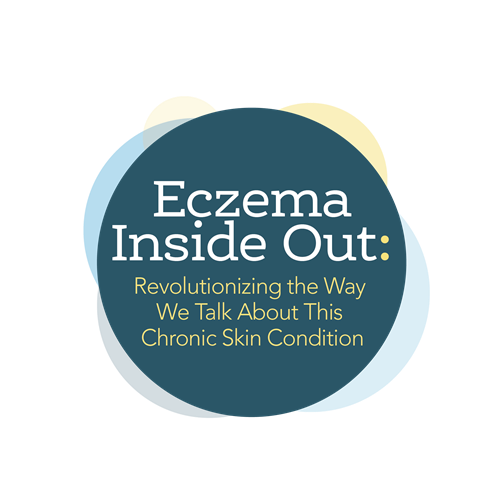Pursuing Breakthroughs for People with Immuno-Inflammatory Conditions
Our Inflammation and Immunology team is helping people with chronic inflammatory dermatological diseases by discovering potential breakthrough medicines that address the underlying causes of immuno-inflammatory conditions. In 2021, we were proud to take significant strides in advancing the understanding of alopecia areata and atopic dermatitis, two diseases that can have a significant physical and emotional impact on patients and on the healthcare system overall.
Atopic Dermatitis
Atopic dermatitis, also known as atopic eczema or eczema, is one of the most common chronic inflammatory skin conditions, affecting people of all ages and genders around the world.3,4 It appears as a rash or skin lesions, causes itching, and may worsen or flare over time.5 More than “just a rash,” atopic dermatitis can be a potentially debilitating condition that disrupts patients’ daily lives and can negatively impact their emotional well-being.6,7
2021 was a landmark year in our journey to bring CIBINQO (abrocitinib), an innovative oral, once-daily Janus kinase (JAK) 1 inhibitor, to people suffering with moderate to severe atopic dermatitis. Milestones included the August announcement of positive top-line results from our head-to-head study comparing the efficacy of abrocitinib to the current standard-of-care treatment, as well as the first regulatory approvals for abrocitinib.
We couldn’t be more excited for the potential impact CIBINQO may have on the lives of patients. In the third quarter of 2021, CIBINQO received marketing authorization from both the European Commission and the Japanese Ministry of Health, Labour and Welfare (MHLW). We are hopeful this momentum will continue with additional regulatory filings under review for abrocitinib around the globe.
Alopecia Areata
Alopecia areata is an autoimmune disease characterized by patchy hair loss, almost always involving the scalp, but sometimes also involving the face (eyebrows, eyelashes, beard), the whole scalp, or the whole body.1,2 People suffering from alopecia areata experience symptoms when their immune cells attack healthy hair follicles, causing the hair to fall out.1,2 Alopecia areata is associated with quality of life issues for many patients, who may suffer from psychological consequences, including feelings of depression and anxiety.1

Eczema Inside Out™ is a program we created to inspire those affected by eczema (also called atopic dermatitis or atopic eczema) to communicate the full impact of this chronic inflammatory skin condition beyond the physical symptoms.
In August, we were thrilled to announce positive top-line results from a Phase 2b/3 trial demonstrating that the investigational treatment ritlecitinib improved scalp hair regrowth after six months of treatment versus placebo in people with alopecia areata. Before December, there were no approved treatments in the EU for this complex and potentially devastating disease, and we’re delighted to have this potential therapy on the horizon in the U.S. and beyond.
Educating on Atopic Dermatitis
We remain committed to people living with atopic dermatitis and have been hard at work to expand our Eczema Inside Out program to deliver educational materials designed for patients and caregivers. We know that living with the debilitating and disfiguring effects of atopic dermatitis can be a significant and underrecognized burden, and those facing these challenges need resources and to be heard.
This year we collaborated with the atopic dermatitis community to share stories and take a deeper look at disparities:
- On World Atopic Eczema Day, we partnered with SELF on “The Real Burden of Eczema in People of Color,” a virtual discussion among patients and experts dealing with symptoms and stigma, as well as addressing health disparities.
- We also partnered with CNN International on “Health Equity for Skin of Color Starts With Representation,” a report providing insights on the disproportionate impact of atopic dermatitis on people of color.

Every Color is Primary is a physician-oriented program designed to help ensure patients of every skin color with dermatological conditions feel seen and understood. The spectrum of skin color and features is something to celebrate, and these differences can also relate to disease prevalence, how diseases present, and how patients are impacted.
Villasante Fricke AC, Miteva M. Epidemiology and burden of alopecia areata: a systematic review. Clinical, Cosmetic and Investigational Dermatology. 2015;8:397-403. doi:10.2147/CCID.S53985.
Pratt CH, King LE, Messenger AG, Christiano AM, Sundberg JP. Alopecia areata. Nature reviews Disease primers. 2017;3:17011. doi:10.1038/nrdp.2017.11.
Weidinger S, Beck LA, Bieber T, Kabashima K, Irvine AD. Atopic dermatitis. Nat Rev Dis Primers. 2018;4:1. doi.org/10.1038/s41572-018-0001-z.
Silverberg JI. Public health burden and epidemiology of atopic dermatitis. Dermatol Clin. 2017;35:283-289.
Anderson RT, Rajagopalan R. Effects of allergic dermatosis on health-related quality of life. Curr Allergy Asthma Rep. 2001;1:309-315.
Na CH, Chung J, Simpson EL. Quality of life and disease impact of atopic dermatitis and psoriasis on children and their families. Children (Basel). 2019;6:133. doi:10.3390/children6120133.
Zuberbier T, Orlow SJ, Paller AS, et al. Patient perspectives on the management of atopic dermatitis. J Allergy Clin Immunol. 2006;118(1):226-232.


